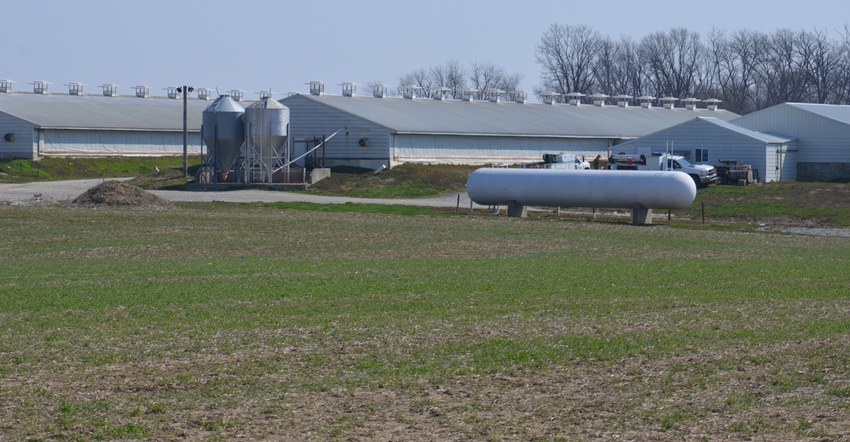January 20, 2020

If you own a hog building in Wabash County, Ind., and a friend owns one in Posey County, Ind., you would expect assessors to use the same methods to determine value for property tax purposes. That just seems logical, right? Farmers tell Randy Kron that it’s not working out that way across the state.
“We began hearing stories about properties being assessed in different ways well over a year ago,” says Kron, Evansville, a farmer and president of Indiana Farm Bureau. “Apparently, different methods are being used in some counties. The result can be different values for the same structure, depending upon where it’s located. As a result, some members believe they’re paying more than their fair share of property taxes.”
Here’s an example illustrating how using a different method can make a difference. One large farm operation in north-central Indiana reports that when its hog buildings were assessed, the person figured the amount of acreage under the buildings and added additional value based on land prices for that acreage. Yet when asking people in other counties, the farmer determined that assessors in some other locations weren’t using that method.
“Assessment to determine value of structures and property for property tax purposes should be fair and equally applied across the entire state,” Kron says. “Our members asked us to make it a priority for this legislative session.”
Legislative issues
Indiana Farm Bureau became aware of inconsistencies in assessment for property tax purposes before the 2019 legislative session. Legislative specialists for INFB made various legislators aware of the situation and asked for a resolution during the 2019 session.
“Unfortunately, it wasn’t resolved in the 2019 session,” says Katrina Hall, direct of public policy for INFB. “It’s one of our priorities in talking to legislators and moving our legislative agenda forward this year.”
Scott Maple, a farmer near Kokomo and District 4 director on the INFB board, says this about the issue: “Property tax is a significant expense in operating a farm, whether grain or livestock. Indiana Farm Bureau has helped monitor and assure property tax assessments are accurate and legal.”
Hall says legislative action may be needed to correct the issue and provide consistent assessment going forward.
INFB has led the fight for property tax reform over the past two decades. The organization has scored significant victories. However, vigilance is needed to make sure more burden doesn’t creep back onto property tax rolls, she says.
“We’re seeing it with an increase in referendums proposed by local governments, especially schools,” Hall says. “Some of it is occurring because various communities are hitting the circuit breaker caps put in place during the Daniels administration.”
Once that happens, schools or government bodies seek additional money elsewhere, Hall explains.
If successful referendums happen too frequently, it shifts burden back to property taxpayers, which reforms over the past two decades sought to remove, Kron adds.
INFB supported a bill in the 2019 legislative session that would have prohibited local referendums from being placed on spring ballots, but the bill didn’t gain traction.
INFB will also be monitoring other legislation that might crop up this session that could impact land use planning and the rights of property owners, Hall concludes.
Comments? Email [email protected].
You May Also Like




